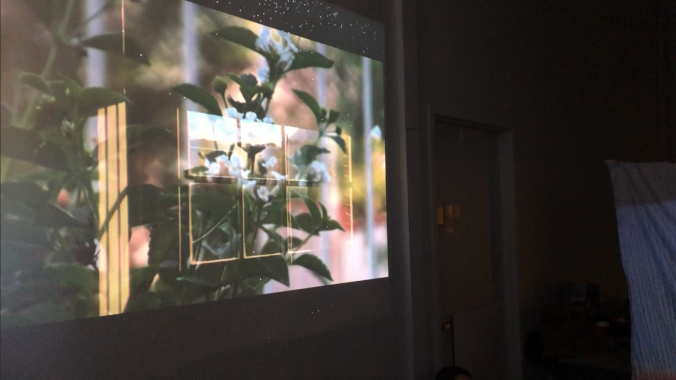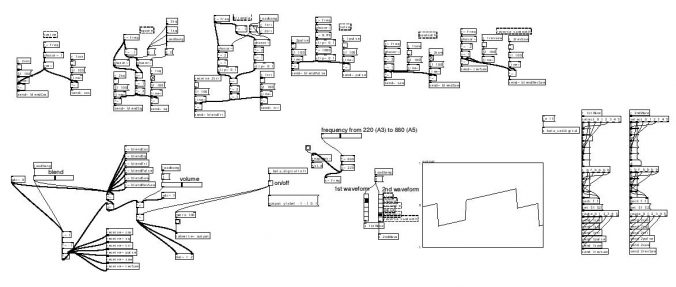The idea of digital versus analog recollection is a driving force. When I began this project, I didn’t fully know what I was expecting of it, or myself, in the process. I wanted to build something immersive and nostalgic and home-y, but struggled with the initial direction. There was no real storyboard for this, it built itself as I was rediscovering my past and overlaying it with that of others. Meditations on Memory (the working title for this piece), came from a place of something unknown and desired. I knew I wanted to open a dialogue about the way we remember things, and how these memories can become universal in different ways. Humans, in many ways tend towards the egotistical (not necessarily in a negative context, but simply that of seeing themselves everywhere), projecting ourselves into the images/memories of others, in places we feel most comfortable.
The physical representation of this project has been one of the primary focuses in the current stages of planning, as the digital is in flux and grows/changes as I do. The original presentation was in a room with three projected screens on varying surfaces. The first was a flat, plaster wall, the second a brick, textured wall, and the third a sheet hung across the room. Of this presentation, the sheet I thought was the most interesting and effective in portraying the feelings I had imagined. It gave the narrative a base in a home-like environment and opened new ways of viewing I hadn’t even considered in production. The most interesting thing about the sheet was the addition of dynamic viewing that it opened to the audience. The sheet allowed for viewing on both sides, allowing for the play of shadows to become a new part of the story. This was particularly important given the original vision of this piece involved the shadows of the observers a lot more than the first showing allowed. The use of shadow was meant to literally project the viewers into the video, physically placing the individuals into the piece so that they might see themselves more literally. This technique is something I hope to utilize more in the future of the piece.
Other considerations I have been making in the evolution of this project is the way the environment effects the way it’s viewed overall. The hope is that Meditations…can be a moveable piece, curating individualized experiences per location so as to best fit the given environments. However, there has to be some sort of consistency throughout the pieces that will eventually make up this unit so finding the right setting is the current focus. An idea I’ve begun dabbling with for this is that of the living, or bedrooms in houses. Taking things like curtains, and altered furniture to create a more home-like atmosphere. I think of it in the mindset that so many stories are told and written in those rooms, that having that environment recreated, even indirectly, might make the viewing experience more digestible.
Another main factor I’ve been taking into consideration in the development of this project is the attention span of the viewers. The initial version was a whopping 6 minutes and 30 seconds, all of which were incredibly fast paced, and (I think) lacking in a lot of ways. While the imagery was nice, many of the clips felt rushed and left the observers either confused or wanting more (not in the best way). I think that slowing many of the clips down, and breaking them into smaller vignettes that can later be pieced together (also in response to the given venues) is something that has worked greatly to the evolution of the piece. This breakdown has also allowed me to piece together stronger stories over the varied screening surfaces (no longer necessarily limited to just three) because of the way shorter pieces of narrative can be carried out over a longer time utilizing a lot more stillness [i.e. if there are three screens and each has a similar image at different points in a story, two of the screens can be still while one progresses towards the next until all three have played].
I’m really excited to continue working on this project and to see how physical production might change the way it can be observed as a whole. I’m also looking forward to sharing the experience here, so keep an eye out for what’s to come!
If you’re interested in seeing the original video that accompanied this installation, feel free to view it here, just know a whole lot is changing!
Also! If you want to read/look at the stuff I’m lookin at (for this project) rn, here are some links/titles:
- In the Future, We Will Photograph Everything and Look at Nothing – Om Malik
- The Conversations… – Michael Ondaatje
- (9) Evenings: Theatre and Engineering
- Combines – Robert Rauschenberg
- Visual Music – Brian Eno
- Tall Ships – Gary Hill
Emma Goldman is a Junior at Rensselaer Polytechnic Institute pursuing a dual degree in Philosophy & Communication and Media. Over the past year they have begun a dive into media production, primarily focused on allowing for more accessible communication in technical areas. They also have a black cat named Cagney who they love very much.



